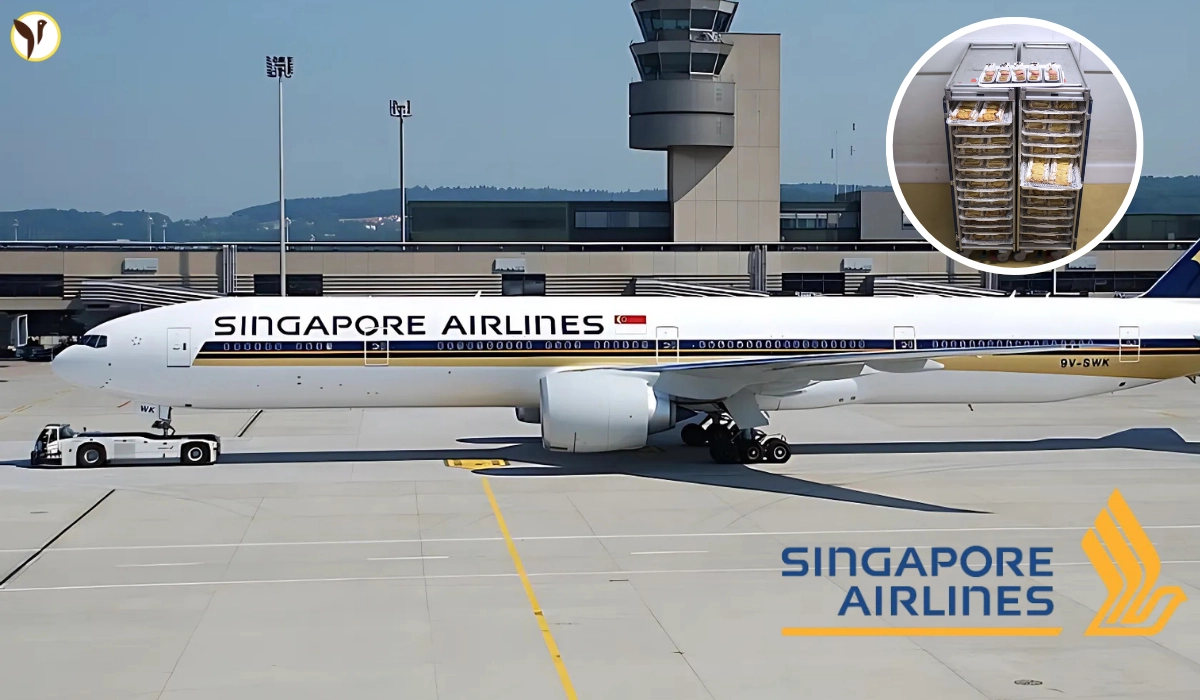Something terrifying occurred at 30,000 feet. A business-class traveller aboard Singapore Airlines Flight SQ026, en route from Frankfurt to New York, required treatment in an ER following shrimp (after letting the crew know of her serious allergy to shellfish). The plane diverted to Paris for medical attention. What a stark reminder that even the smallest oversight can lead to a life-threatening situation so quickly.
Unexpected Situations Quickly Arise in Flight
You can never know when things can turn bad very quickly in the air, you know? Doctor Doreen Benary, a pediatrician based in New York, informed the cabin crew right after boarding October 8 2024 of her allergy to shrimp. She was expecting they would give her a new meal. When her tray came she took one bite and immediately started feeling horrible—her throat was closing, she began sweating and panicking. The crew only recognized their mistake after she asked about her meal, and admitted it quietly. That must have been a terrifying moment for her—a feeling that something was wrong but not know what, trapped inside a fuselage.
The pilots took the necessary steps—they went to Paris, with Benary taken to two hospitals. She described getting treated for her allergic reaction as painful and the lawsuit states she suffered "great pain, agony and mental anguish." It is not just hyperbolic language—it is true suffering from a mistake that could have been made whole.
The Attack is Hidden Danger from Regular Meals
You'd think airlines would be extra careful, considering past incidents, right? Singapore Airlines even ended its peanuts service in 2018, after one of its fliers had an allergic reaction to peanut dust from a toddler holdall. So people had some trust airlines would not be making the same mistakes. But allergies to shellfish are no laughing matter—they can often be more severe than those to nuts. Even a morsel of shrimp could cause anaphylaxis by cutting off your airway.

This is where the danger escalates and becomes scary:
- Crew may grab trays from galley carts without checking the labels properly.
- Meals are always pre-consumed, and shellfish could be a component of sauces or salad mixes added before service, with no records of where these mixes came from.
- There is no sealed "allergy-safe" station in the cabin.
- Allergens can spread in airflow and steam in the galley for which the crew cannot afford to inspect.
- And on top of that, not everyone has an EpiPen or booster drugs at hand, and airlines kits do not always include them.
These small leaks in the process add up. You’re told your allergy is noted—but then a shrimp dish arrives. That mismatch can kill someone in minutes.
Legal Storm Over Duty of Care
Now, Benary is calling it negligence. She filed a federal lawsuit in New York under the Montreal Convention—the same rulebook airlines follow for injuries or death during international flights (Articles 17 & 21). She’s saying Singapore Airlines failed big time:
-
They didn’t follow their own procedures.
-
They didn’t confirm her meal was safe.
-
And they served shrimp anyway.
She’s seeking full damages—both for physical harm and emotional trauma. The court’s looking at whether the airline can prove it did everything right or if this was a clear lapse in care. It’s huge, because if they lose, airlines around the world might be forced to adopt stricter allergen protocols. That could mean sealed allergy zones, better crew training, even having EpiPens onboard.
Why Passengers should Care Now
This isn’t just about Dr. Benary. Imagine you or someone you love has a severe allergy—peanuts, shellfish, tree nuts. You trust airlines to keep you safe, but this shows how easily things can slip. You’re stuck at 35,000 feet with limited help.
What you can do:
-
Call the airline 48–72 hours before and reconfirm your allergy.
-
Fill out special meal requests like no shellfish/no nuts.
-
Bring sealed snacks labeled clearly.
-
Wear a mask or wipe down your tray and area as soon as you board.
-
Keep EpiPens, antihistamines, emergency card within reach.
-
Ask the flight attendant to double‑check the meal tray before you open it.
These aren’t fun tips, but lifesavers. Air travel is supposed to be safe and relaxing—not a risk zone.
What Airlines should do—Fast
This case should trigger some serious updates across the board:
-
Create clearly labeled allergy-safe meal pouches, sealed and verified.
-
Train staff to always wear fresh gloves when handling special meals.
-
Make cabin announcements: “We have allergy zones—please avoid eating shells.”
-
Clean birth-galley surfaces and vents thoroughly between flights.
-
Stock EpiPens in first‑aid kits and train crew to use them.
These steps sound basic, but right now they’re not standard enough. That needs to change.
The Bigger Picture—Travel Safety at Risk
It’s easy to assume full-service airlines have everything figured out. But this incident shows that behind the fancy meal carts and polite crew, small mistakes can spiral into medical crises.
As more people live with life-threatening allergies, airlines have to catch up. People shouldn’t have to fight a legal battle just to survive a meal onboard. This might be a wake-up call—one that could lead to safer skies for everyone.


/content/stories/thumb/thumb691acf48cceef7.90710965.webp)
/content/stories/thumb/thumb691abf43d9ee95.26593830.webp)
/content/stories/thumb/thumb691ab5532e24c1.34805318.webp)
/content/stories/thumb/thumb691aab78a89ce4.88679144.webp)
/content/stories/thumb/thumb69184c813c8444.34590724.webp)


